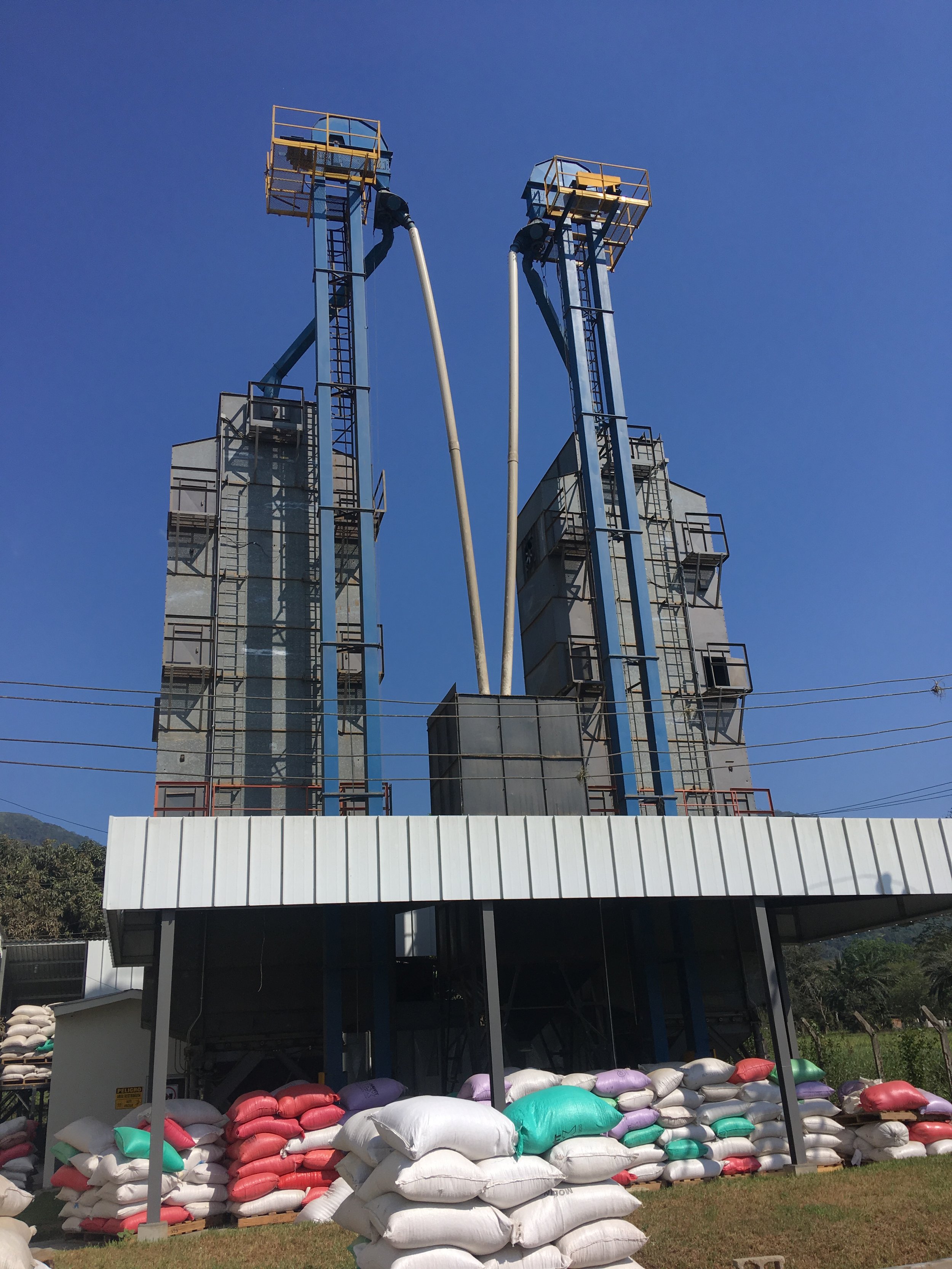What is Natural Coffee?
Coffee Cherries drying on a patio, Ocotopeque, Honduras 2018
A goal of mine with Danelaw is to demystify specialty coffee, so I want to give you some more detail about one of my favourite processes used in the coffees I source. Natural coffee sounds simple enough - just coffee right? But there is much more to it than that and those details can be quite distinctive and it all contributes to how the coffee tastes.
Ripening Yellow Bourbon and Orange Bourbon cherries in El Salvador, 2018
So like I mentioned in my previous email, the coffee you’re sipping on starts life as a fruit - technically a drupe I think - resembling a berry or even a nectarine. Inside the fruit, the seed lies at the centre, known as the “bean” which is the component we’re interested in. Surrounding the bean are numerous layers of protective membranes and coverings as well as plenty of fruit including pulp and mucilage. In keeping with our nectarine example, the pulp is the juicy flesh that trickles down your chin, while the mucilage is the sticky substance that adheres to the stone and makes it impossible to place it in your car’s cupholder. Up to this point the process is somewhat similar to the washed process but from this point on it’s pretty much all different.
Coffee cherries drying at Beneficio San Marcos, Honduras, 2018
The natural process is occasionally called the dry process, because it uses very little water. At its most basic, the coffee cherries are laid out in the sun to dry with the fruit intact. Sometimes on concrete patios, sometimes on plastic sheets or tarpaulins. There’s fairly high risk of contamination with these methods, and sometimes you’ll get coffees that taste a bit like soil. It can take several weeks for the coffee to fully dry out, and it's really important that the processing workers keep turning it as it dries, to prevent it going mouldy.
Coffee Cherries potion drying at Fazenda Rio Verde, Brasil (Photo: Mercanta)
A more sophisticated, and better controlled method of drying coffee is to put it on what is called a “raised bed”; a wooden frame with a black mesh net hung over it holds the coffee so that the air can circulate all round. It still needs careful turning to avoid mould. These can be more sophisticated still, being made of metal and more permanent installations inside greenhouses with lots of windows to keep air moving. In the image below, the coffee is on a metal raised bed (but in the picture it is a washed coffee rather than a natural)
As the fruit dries, the naturally occurring bacteria and yeasts on the surface of the cherry can cause fermentation. In small quantities, this can create delicious fruity coffees, but if it goes too far it will spoil the coffee and make it taste sour and vinegary.
Ludwin Aguilar in his raised bed greenhouse, Honduras, 2018
On a larger scale, natural coffees can be made by putting the cherries into a massive tumble dryer. This can speed up processing considerably.
Hawit Cafes’s dryer, Yoro, Honduras, 2018
After the cherry is fully dried, the producer can pass the coffee through a sort of threshing machine to break the dried skin and mucilage off.
Coffee cooling, Danelaw Coffee, 2023 (Photo: Andrew Charlesworth)
As with everything, there’s a wide range of quality and flavour that can come from natural coffees.
At the cheapest end of the market, they can be dirty, earthy and bitter - a very low quality bean. Big commercially produced naturals are often from Brasil, where they taste like peanuts, caramel and chocolate.
Some producers have made natural coffee something of an art form though. By selecting the ripest cherries, and taking thorough care to dry them properly, they can create astonishing coffees, with intensely fruity flavours. Mango, Papaya, Passionfruit, Plum and Sherry are regular tasting notes for great quality natural coffees.
Dave celebrating his appearance in the World Coffee in Good Spirits final with coffee farmer Graciano Cruz
It was some of these astonishing natural coffees that I used to win the UK Coffee in Good Spirits Championship. Working with farmer Graciano Cruz, I used some of his coffees from Panama to make brilliant coffee cocktails.
From my current range, I have three Natural coffees which have slightly different characteristics.
Brasil Fazenda Rio Verde Aura Magna Premier Cru B34 “Orange Blossom” Blue
Why not try one or two of them and see what you think?
There is also a Taster Box available with all three in.








